Social posts that still do #numbers
Get your social posts right, and they can still do the business, even on Facebook.
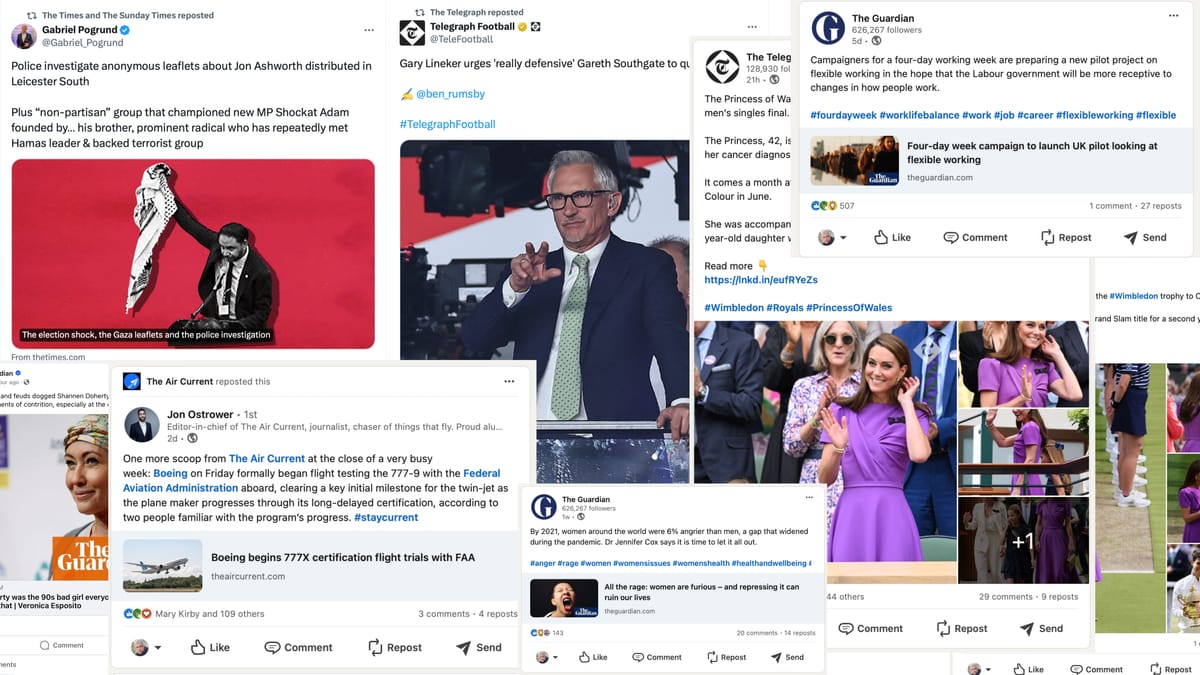
It's become received wisdom that the days of social media traffic are over. The problem? It's not true. Oh, sure, the days of easy traffic are over, and the days of huge traffic are done. But social remains — and is likely to remain — a classic top end of the acquisition funnel play; a place where we encounter new readers and encourage them to our site, where we can work to engage them further.
I'm in the middle of teaching a social media course at the moment, and I was looking for examples for a session today of posts that were working, so we could discuss why. It's notable that, comparing good examples from a couple of years ago, that overall engagement numbers are down. The decline is real. But it doesn't mean that good posts, that are well-constructed with attention paid to the psychology of social media can't still do well.
Here's some examples.
Despite the sense that news and politics are dead and buried on Meta's platforms, that's not always the case. For one thing, sometimes the sheer level of engagement around a post (as in our first example) will outweigh the algorithmic depression for these topics. And, more generally, Meta seems to be defining news and politics fairly tightly right now.
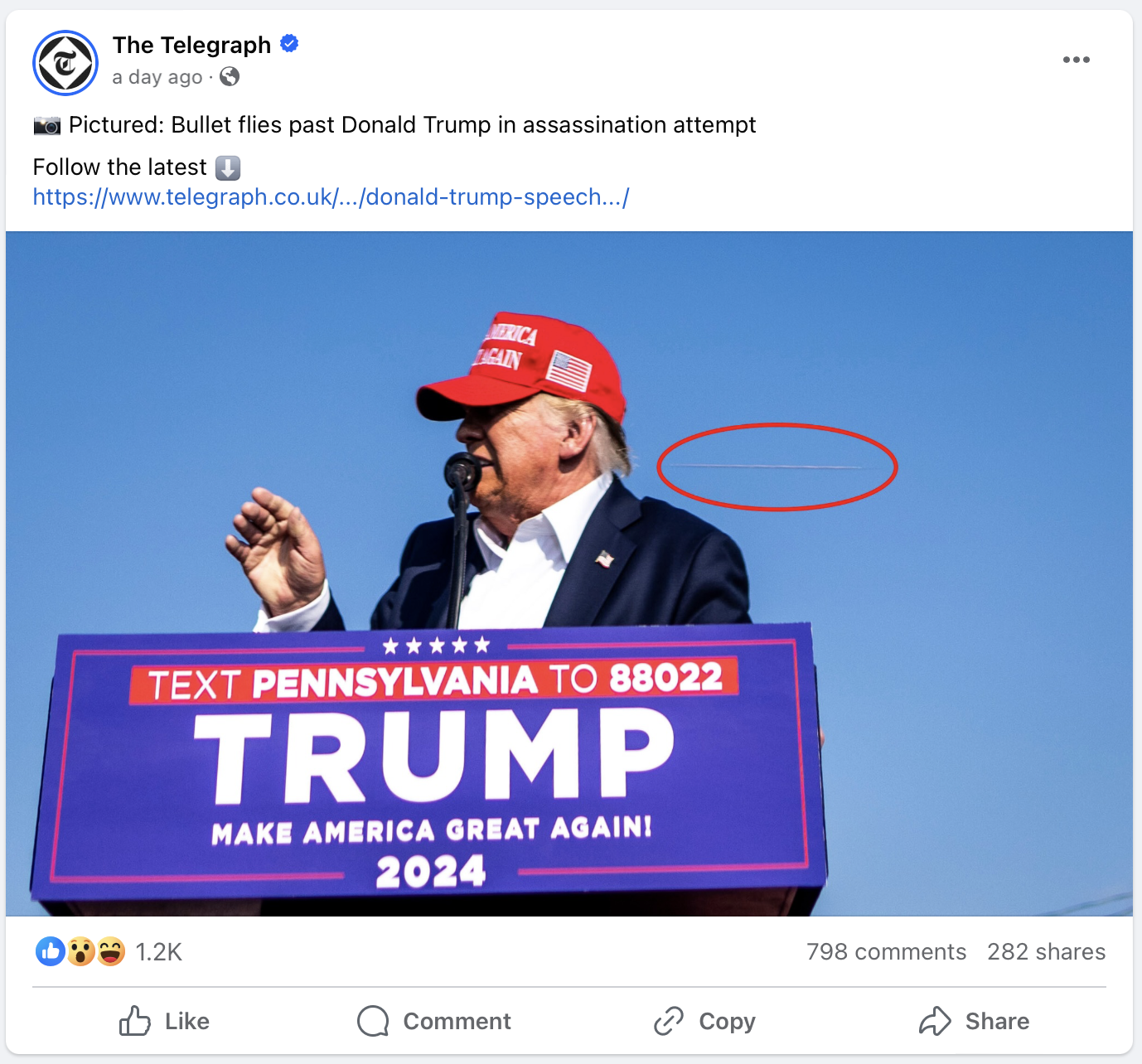
Ah, the big story of the weekend. A striking image — but only because of the unsubtle use of the red lasso around the bullet streak. A reminder of how important powerful, arresting images are to social success. Interesting to see the Telegraph resurrecting an approach from 12 years ago: posting a photo with the link in the descriptive text. Meta used to penalise those - but maybe not any more.
I'd be interested to know how much of this engagement turned into link clicks, though, as there's enough information in the post to make it into a social object in its own right.
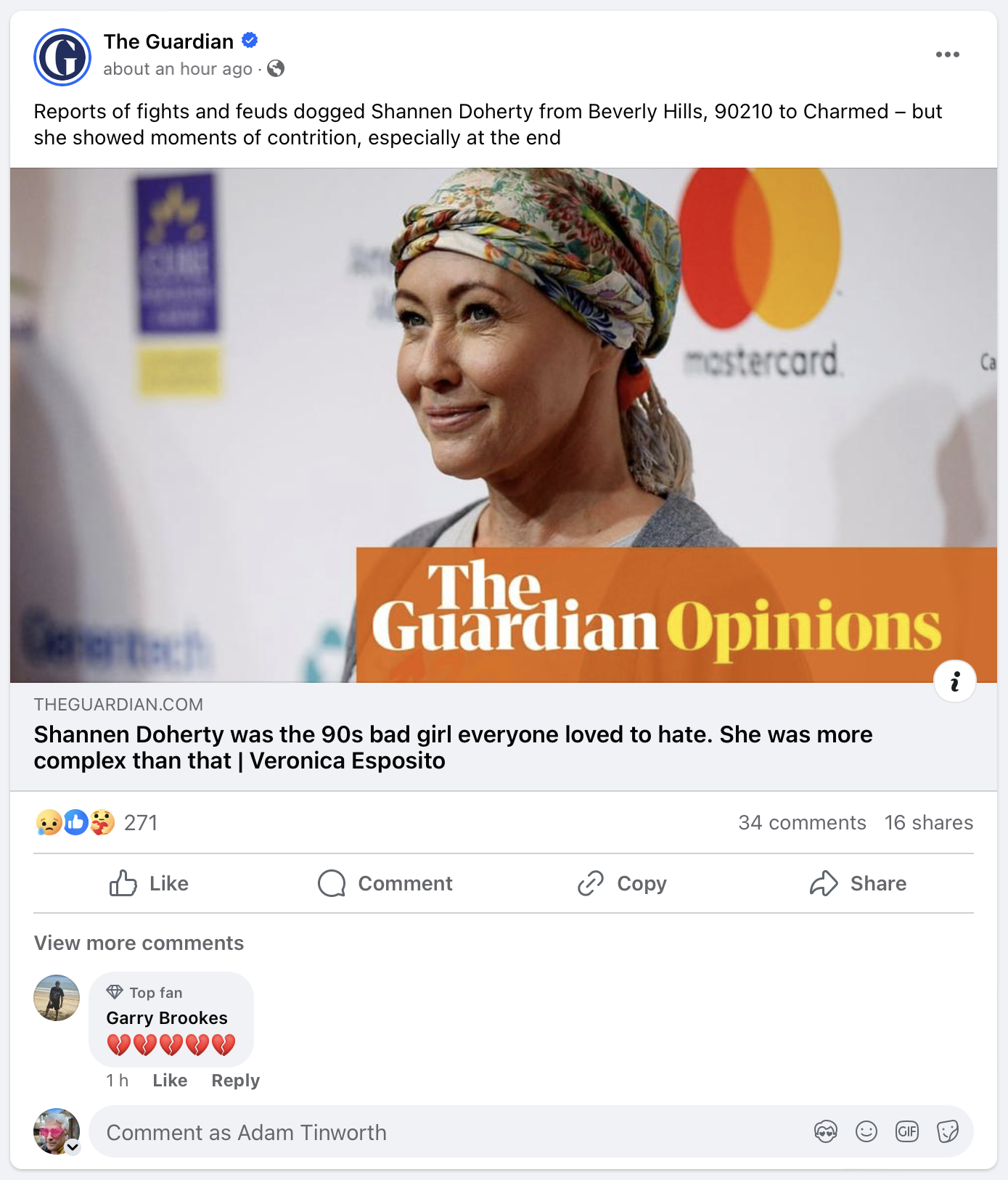
An emotive story — one that's perfect for social media. Well-chosen image, with the headscarf that's aching familiar to those of us who have had relatives go through chemotherapy. And Doherty, thanks to her stints on Beverly Hills 20210 and Charmed, is likely to be known to Gen Xers and Millennials, the last two cohorts to have adopted Facebook. Gen Z and the Alphas aren't touching it. And the choice to go with a post that highlights her controversies is likely to attract more clicks than one that was more of a hagiography.
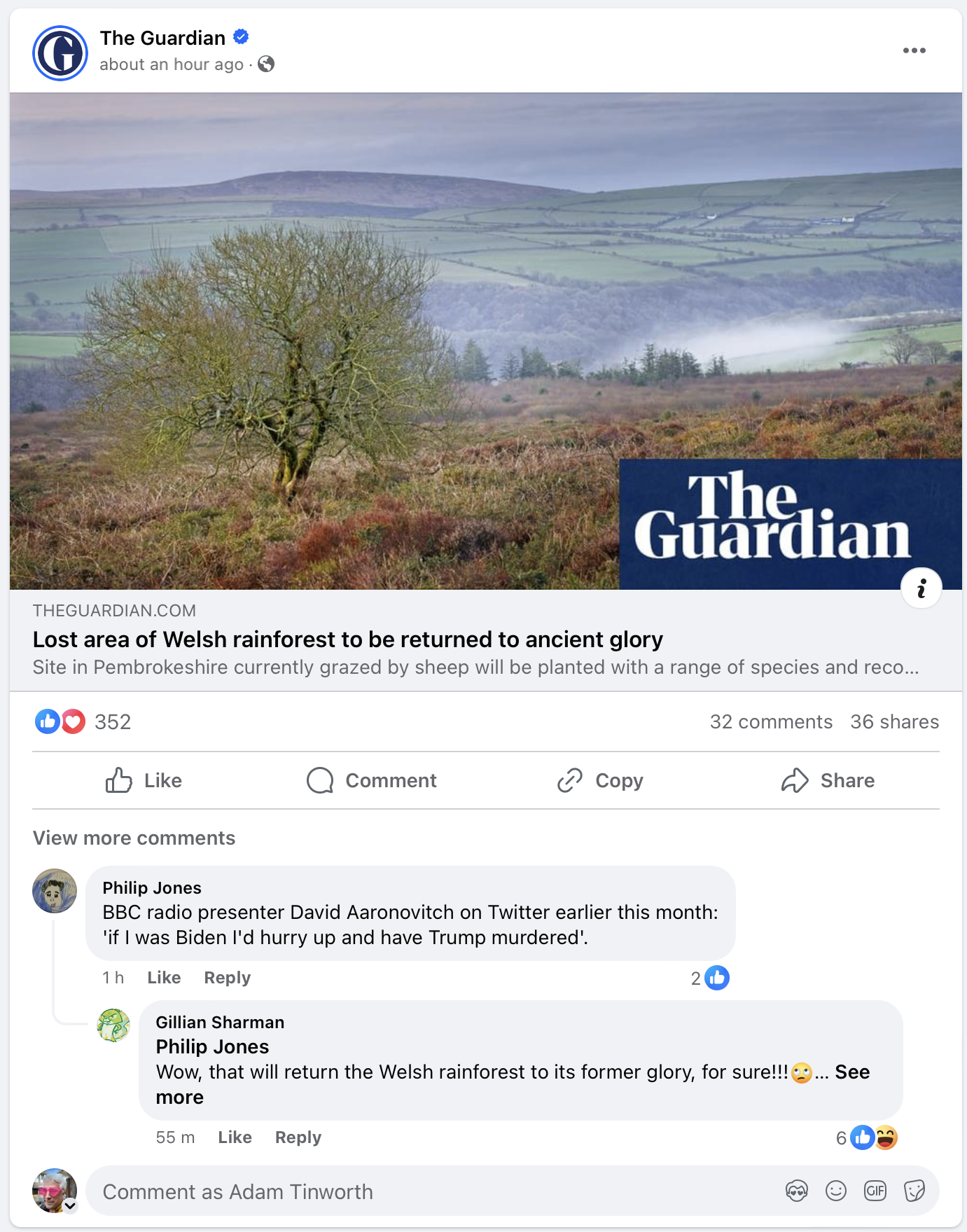
This is fascinating, because the reason this works are less obvious. However:
- Unusual photo for most people's feeds, which gives you a chance to sell the story
- "Welsh rainforest" will be a new idea to many, triggering curiosity.
- There's actually a lot of controversy about this subject,. especially the tension between rewilding advocates and farmers.
That amount of engagement in under an hour is really good — news can still work on Facebook. You just have to choose the right news.
X
Ah, Musk's sh*tshow is increasingly hard to get anything useful from, but a handful of posts are still getting traction.
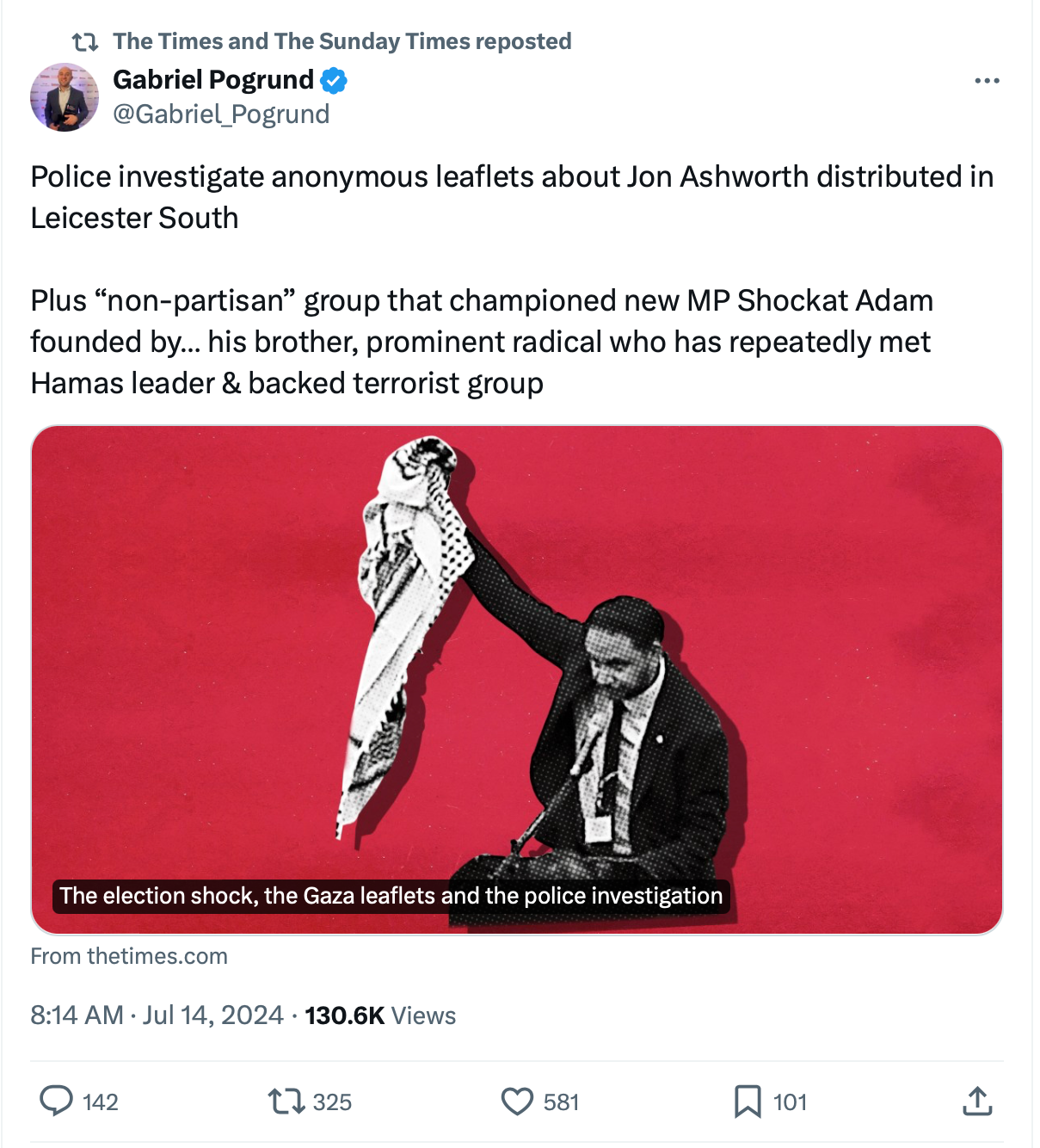
Interesting to see The Times using its greater reach to amplify the voice of a journalist. This is something more publications should do: people engage with people more than they engage with brands, whatever the brand marketers would like you to believe. Lots of hot button issues here: Gaza, election fraud and great, attention-grabbing image for the social card.
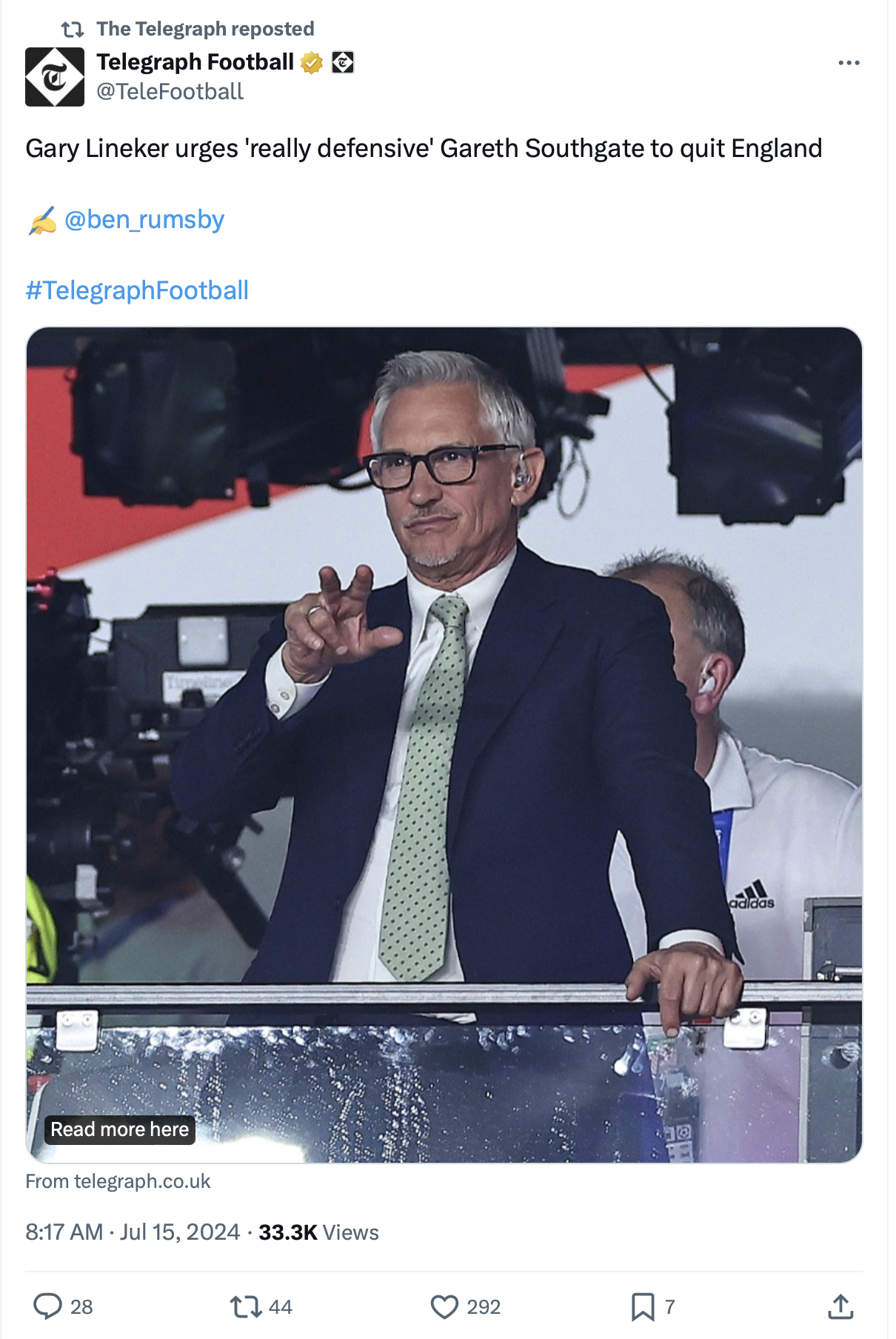
Here we see the Telegraph's main account boosting a niche one. Great choice of image playing off the unpopularity of Lineker amongst the target audience. But what the heck are they doing with that hashtag? I would be amazed if any significant volume of X users are following that bespoke hashtag.
For many publications, LinkedIn is taking up the slack from X. My traffic from the Musked network has dropped like a stone, but my LinkedIn traffic has more than made up for it. It's the to shake off the idea that it's all about business thought-leadership.
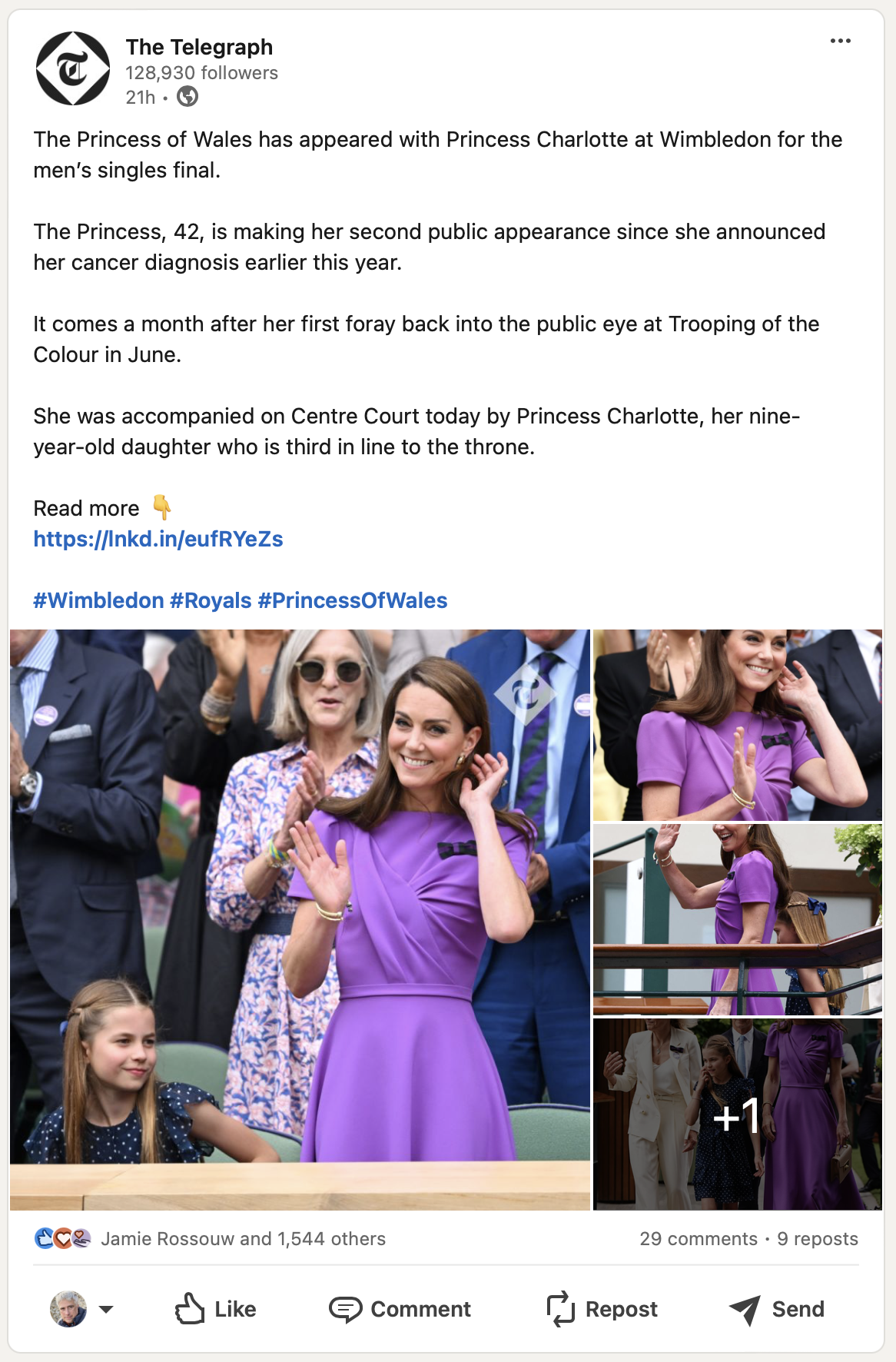

These two photo posts, with links in the descriptive text — a clear strategy from the publication across networks here — are doing good numbers. Again, difficult to know how much of that translated into link clicks, but at least they're building affinity for future posts. A testament to the power of striking, well-chosen images for social, even on the “business” social network.
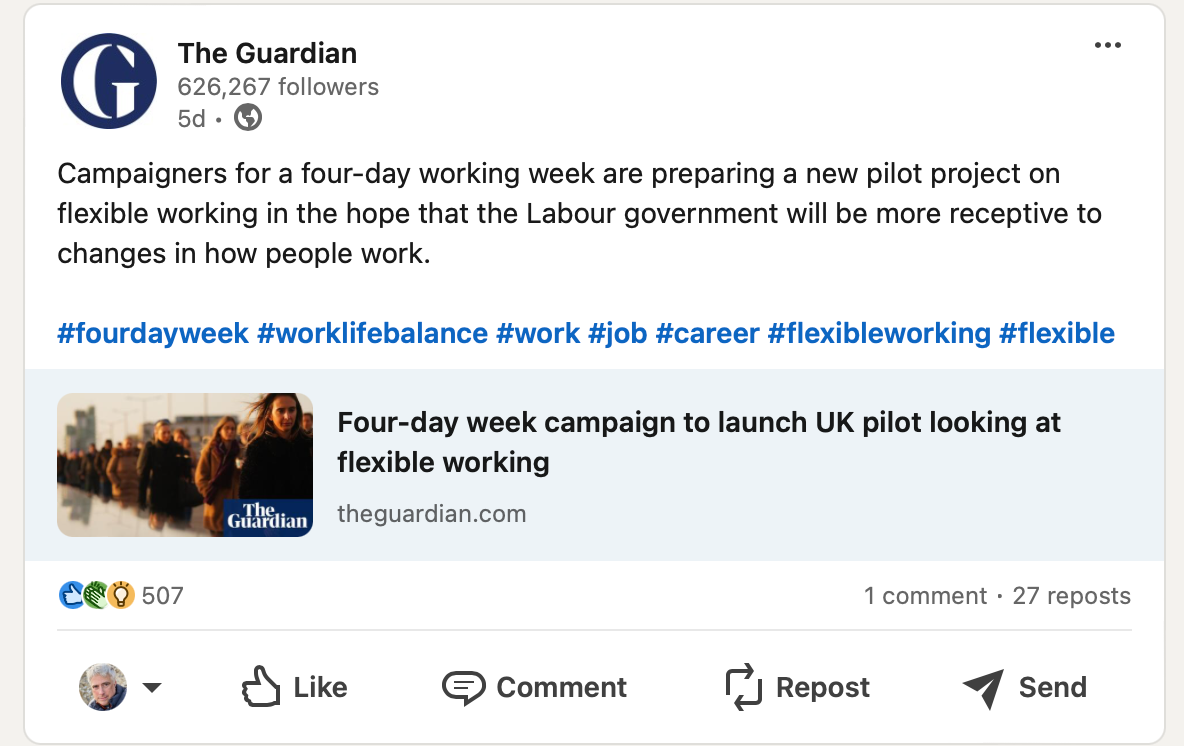
Ugh. I do not like the new LinkedIn social card format. But this is a good illustration of how LinkedIn posts can be slow burns. This is still being surfaced by the algorithm and earning engagement nearly a week after it was posted. Classic LinkedIn material — business relevant story that's of interest to everyone. Some good hashtags choices — and some questionable ones. Is anyone really following “#work” on LinkedIn? Isn't that, basically, the whole site?
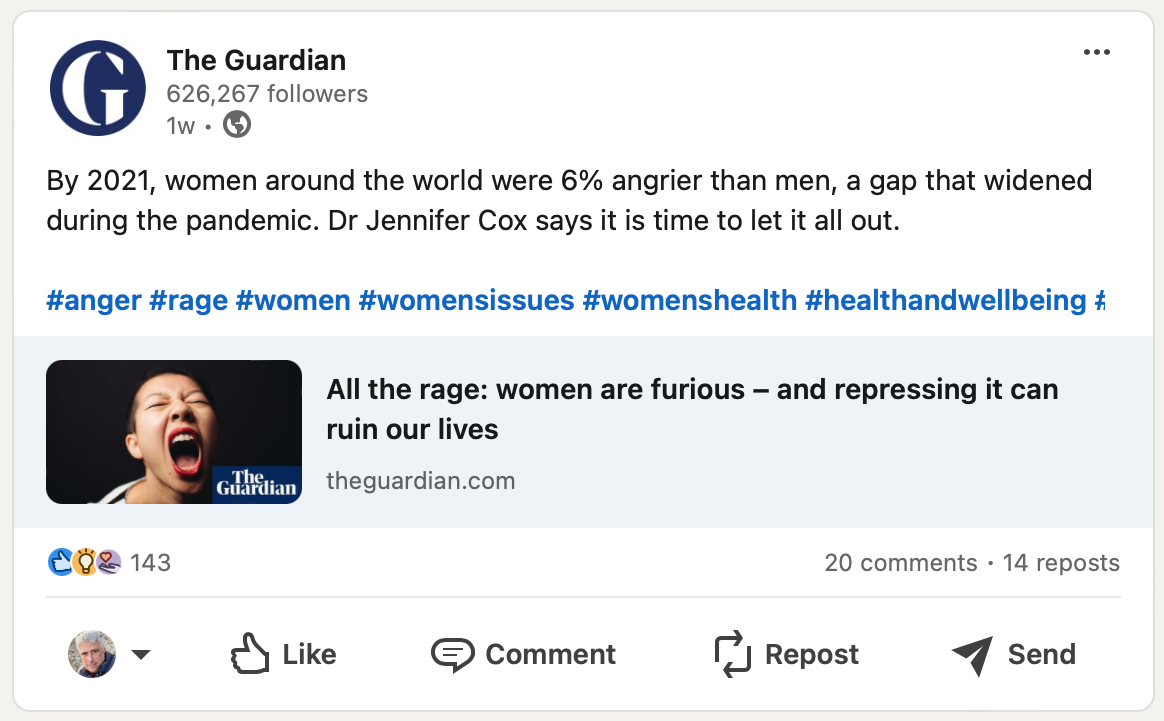
I'm afraid to comment on this one. Emotive, serious, of direct relevance to half of the population, and less directly to the whole population. And unusual image for the feed, which is going to draw curiosity. And the posts is still moving in the feed after a week. LinkedIn can be very slow burn, sometimes. It's possibly the worst network for time-specific posts.
I don't want to meet the people who follow “#rage” on LinkedIn — if they exist.

An interesting point of comparison with the Guardian post above. A post by niche online aerospace publication The Air Current, reposting a two day old post from editor-in-chief and friend of this site, Jon Ostrower. That both uses the site's following to amplify an individual's voice, but also potentially gives the post another algorithmic boost going into a new week. And the numbers are only a little way behind The Guardian's one. LinkedIn repays niches more than it does general material.





